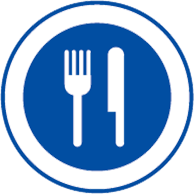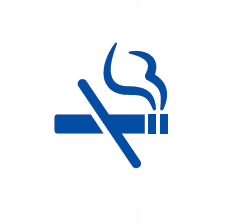Before TAVI

Please let us know if you DO NOT have any of the following:
- Family doctor
- Cardiologist
- Recovery Support Person: the person who will help you when you get home. We recommend someone is available to help you for the first week (day and night) you are at home.
- Driver: the person who will pick you up from the hospital at 11 a.m. on the day you are discharged. You will also need transportation to and from any appointments.
- Power of Attorney for Personal Care: the person you have appointed with the legal authority to make medical decisions on your behalf if you are unable. If you do not have a Power of Attorney for Personal Care, a substitute decision maker will be appointed for you in accordance with the law
Determining if TAVI is right for you
To figure out if TAVI is the best option for you, there are two tests that are needed. Without these tests, we cannot perform an aortic valve replacement.
Coronary angiogram
The coronary angiogram is to look at the condition of the arteries that give your heart blood to make sure your heart muscle is healthy enough to undergo a valve replacement. It also shows the location of your arteries and if a valve can safely be placed.
Before your procedure, nurses will assess you and an intravenous (IV) will be started in your hand. When your cardiologist is ready, you will be brought to the Catheterization Lab (Cath Lab). The procedure can take anywhere from 30 minutes to several hours depending on what your heart needs.
What will happen during my procedure?
- The puncture site – either in your groin or your wrist – will be cleaned and injected with a local anesthetic so you don’t feel any pain during the procedure.
- A small incision (cut) is made through your groin or wrist to give the cardiologist access to your artery.
- The cardiologist will feed a small tube (catheter) into your artery and up to your heart.
- X-ray dye will be injected into the catheter to help create pictures of the blood vessels and assess your blood flow.
- If blockages are found, you may have an angioplasty to fix the blockages.
- The tube is removed and pressure is applied to the puncture site.
- Your cardiologist may recommend medication changes or another procedure depending on the findings.
During the procedure, your family can wait in the waiting area on the third-floor of the A-wing, room A3 37.
What will happen after my angiogram is done?
After the procedure is done, you will return to your room. You will be connected to a heart monitor and a nurse will check your blood pressure and puncture site often. You will also undergo blood tests and an electrocardiogram (ECG or EKG) which measures the electrical activity of the heart.
You will need to sit or lie still for four to six hours after the procedure. In some cases, a clamp or sandbag will be applied to the puncture site for the first couple of hours to help with healing. You may experience some bruising or tenderness around the insertion site. This is normal and will get better in time.
CT gated aorta (CT scan)
The CT scan shows us the size of your arteries in your groin and through your chest as well as the size and shape of your valve.
A CT scan is x-rays taken from different angles at the same time. A computer creates crosssectional images – like slices in a loaf of bread – of your anatomy.
Why do I need a CT scan?
CT is essential to decide if TAVI is possible. The radiologist will measure your arteries from your groin through to your aortic valve, and all of your heart anatomy near the valve. The CT scan shows how severe your aortic valve thickness is along with any areas around the valve that might be affected by the placement of a new valve. Your heart valve is measured to help decide what size of valve will fit best. This information is vital for the interventional cardiologist(s) to decide if your body can allow the aortic valve to travel up to your heart and replace your old valve safely.
How do I prepare for the CT scan?
- You cannot eat solid food 3 hours before the CT scan. You should continue to drink clear fluids.
- Most of your medications can be taken as usual. The TAVI team will inform you of any medications to not take before the scan.
- Arrive 15 minutes early. Go to A-wing, ground floor, room AG 256. Sign in at the CT scan registration desk and complete paperwork.
What will happen during the CT?
- You will need to change into a hospital gown. Do not wear jewelry.
- You will lie down on a table that will move you in and out of the CT scanner; a large donutsized machine in the middle of the room.
- An IV will be inserted for dye (contrast) to be given during the CT scan so your arteries can clearly be seen for measuring. When the contrast is injected, your veins will feel warm and you may have a sensation of needing to urinate. These feelings will pass quickly.
- The CT scan, including preparation, could take over two hours.
What will happen after the CT?
- Once the scan is done, you will wait in a room to be monitored for any reactions to contrast (the dye) for 10 minutes or more.
- When you get home, drink one to two cups of clear fluids to dilute the dye and help your kidneys void the dye sooner out of your body.
- The CT report takes one to two weeks to be completed and it is then sent to the TAVI team for review.
Risks and benefits
The TAVI team will discuss the risks and benefits at your appointment.
Preparing yourself and your home
Waiting for TAVI
- Eat foods low in salt and don’t add salt to your food. Maximum total salt intake in one day should be 2 grams.
- Drink less than 2 litres (8 cups) of liquid per day. If you have kidney issues, follow your nephrology team’s advice on how much liquid you can drink per day. Liquid includes soup, Jell-O, coffee, tea, water, juice, shakes and smoothies.
- Walk every day, slowly and rest often. If you have difficulty breathing or feel tired, stop and rest.
- Do not lifting objects more than 5 kilograms (10 pounds). This includes holding children, carrying groceries or a basket of laundry. Do not shovel snow, use a snow blower or cut grass. These activities will increase your heart rate.
- Take all your medications as prescribed. If you feel your medications need to be changed, please see your family doctor, cardiologist or other specialist before stopping or adjusting medications.
If you have difficulty breathing or chest pain while moving that does not get better after resting for more than 10 minutes, please quickly seek urgent medical attention. Tell the paramedics and emergency department doctor that you have severe aortic stenosis and waiting for TAVI at Sunnybrook Health Sciences Centre.
If you are admitted to any hospital because of breathing issues, please call the TAVI clinic at 416-480-5254 and leave a message. This information will guide scheduling TAVI.
There is a chance that after you are scheduled for TAVI, the date may be changed due to another patient who is critically ill needing valve replacement as soon as possible. This decision is carefully made with many considerations. Your patience and understanding are appreciated.
Pre-anesthesia assessment
During the assessment, a nurse will ask you about your medical history, the medications you take and will talk to you about any special needs you might have after your procedure. You may also meet with a pharmacist and the doctor (anesthetist/anesthesiologist), the person who will make you sleepy/relax (give you sedation) when you have TAVI. The doctor will review your medical history and make a safe plan for sedation during TAVI.
What do I need to do for my assessment?
- Please check-in at B-wing, 1st floor, room 11 (B1 11).
- The visit will take place in the Pre-anesthesia Clinic and last from two to four hours.
- Please eat and take your medications as usual before you come to this appointment.
- The physical copy of this guide book
- Your Ontario Health Card
- The name and telephone numbers of your family doctor and any specialists who treat your medical conditions
- All of your medications in the containers they came in. These include pills, inhalers or puffers, injections, and eye drops. Also bring any herbal medicines or vitamins you take
- Only one family member or friend to the appointment.
Preparing your body for TAVI
Maintaining a healthy lifestyle can help prepare your body for TAVI and help with your recovery after this procedure. Eat heart-healthy meals, follow a no-salt added diet and continue an easy, light exercise routine as advised by your TAVI team and cardiologist. Stop exercises that bring on signs of your heart problems.
6 days before TAVI

Medications
If you take anticoagulants or antiplatelet medications (also known as blood thinners), your TAVI doctor, nurse practitioner or the pre-admission clinic nurse or pharmacist will tell you when to stop these medications.
1 day before TAVI

Antibacterial soap
Use the special antibacterial soap prescribed to you and wash from your neck down.

Sleep
If you think you may have trouble sleeping, speak with your family doctor about taking a sleeping pill. Feeling anxious or afraid is normal. Sometimes talking to someone helps to decrease your worry.

Food
DO NOT eat solid food or milk/ milk products after midnight.
Morning of TAVI

Drinking
DO NOT drink for two hours before TAVI. You may rinse your mouth with water or brush your teeth, but do not swallow.
You may take a small sip of water if you are directed to take medication before TAVI.

Antibacterial soap
Use the special antibacterial soap prescribed to you and wash from your neck down. DO NOT use perfume, cologne, scented cream, body lotion, deodorant or hair products.
Sunnybrook is a fragrance-free hospital.

Makeup and accessories
Remove all make-up, nail polish, jewelry and body piercings.

Stop Smoking
Smoking can affect your healing. Try to stop or smoke less before TAVI. Speak to your doctor or nurse practitioner if you would like to quit smoking or you need help with withdrawal symptoms. You may also visit smokershelpline.ca.
Preparing your home for your recovery
- Precook enough meals for several days and freeze in single servings. You may want to arrange for family or friends to help you with your meals after your procedure.
- Arrange for someone to help with physical tasks when you are at home, like cooking, home maintenance, laundry. You will not be allowed to lift over 2.3 kilograms (five pounds) per arm, or 4.6 kg (10 pounds) total for at least 4 weeks or until you have been advised on physical activity at your TAVI clinic assessment four to six weeks afterwards.
- Do not drive for four weeks after TAVI. Arrange for someone to drive you to your appointments.






